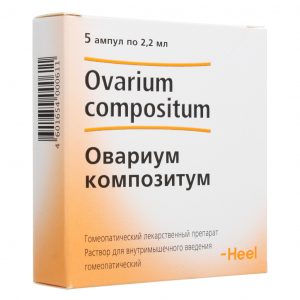Description
Release form
Dragee
packaging
21 pcs
Indications
Hormonal contraception.
Use during pregnancy and lactation
Janine ® is not prescribed during pregnancy and during lactation.
If pregnancy is detected while taking Janine ®, it should be stopped right away. However, extensive epidemiological studies did not reveal any increased risk of developmental defects in children born to women who received sex hormones before pregnancy, or teratogenicity when sex hormones were taken by negligence in the early stages of pregnancy.
Taking combined oral contraceptives can reduce the amount of breast milk and change its composition, therefore, their use is contraindicated in lactation. A small amount of sex steroids and / or their metabolites may be excreted in milk.
Special instructions
If any of the conditions, diseases and risk factors listed below are present, you should carefully weigh the potential risks and expected benefits of using combined oral contraceptives in each individual case and discuss it with a woman before how she decides to start taking the drug. In case of weighting, amplification or the first manifestation of any of these conditions, diseases or an increase in risk factors, a woman should consult with her doctor, who can decide whether to discontinue the drug.
Diseases of the cardiovascular system
The results of epidemiological studies indicate a relationship between the use of CPC and an increase in the incidence of venous and arterial thrombosis and thromboembolism (such as deep vein thrombosis, pulmonary embolism, myocardial infarction, cerebrovascular contraceptive disorders). These diseases are rare.
The risk of developing venous thromboembolism (VTE) is highest in the first year of taking such drugs. An increased risk is present after the initial use of combined oral contraceptives or the resumption of the use of the same or different combined oral contraceptives (after a break between doses of 4 weeks or more). The data of a large prospective study involving 3 groups of patients show that this increased risk is present mainly during the first 3 months.
The general risk of VTE in patients taking low-dose combined oral contraceptives (ethinyl estradiol –
VTE, which manifests itself as deep vein thrombosis, or pulmonary embolism can occur with any combination oral contraceptives.
It is extremely rare when using combined oral contraceptives that thrombosis of other blood vessels occurs (for example, liver, mesenteric, renal, cerebral veins and arteries or vessels of the retina). There is no consensus on the relationship between the occurrence of these events and the use of combined oral contraceptives.
Symptoms of deep vein thrombosis (DVT) include the following: unilateral edema of the lower limb or along a vein in the leg, pain or discomfort in the leg only when standing upright or when walking, local temperature increase in the affected leg, redness or discoloration of the skin of the leg.
Symptoms of pulmonary embolism (pulmonary embolism) are as follows: shortness of breath or rapid breathing, sudden cough, incl. with hemoptysis, acute pain in the chest, which may intensify with a deep breath, anxiety, severe dizziness, rapid or irregular heartbeat. Some of these symptoms (e.g. shortness of breath, cough) are nonspecific and may be misinterpreted as signs of other more or less severe events (e.g., respiratory tract infection).
Arterial thromboembolism can lead to stroke, vascular occlusion, or myocardial infarction. Symptoms of a stroke are as follows: sudden weakness or loss of sensation of the face, arm or leg, especially on one side of the body, sudden confusion, speech or comprehension problems, sudden one- or two-sided loss of vision, sudden disturbance of gait, dizziness, loss of balance or coordination of movements sudden severe or prolonged headache for no apparent reason, loss of consciousness or fainting with or without an epileptic seizure. Other signs of vascular occlusion: sudden pain, swelling and weak blueness of the limbs, acute abdomen.
Symptoms of myocardial infarction include pain, discomfort, pressure, heaviness, a feeling of constriction or fullness in the chest, in the arm or behind the sternum, discomfort radiating to the back, cheekbone, larynx, arm, stomach, cold sweat, nausea, vomiting or dizziness, severe weakness , anxiety, or shortness of breath rapid or irregular heartbeat. Arterial thromboembolism can be fatal. The risk of thrombosis (venous and / or arterial) and thromboembolism increases:
– with age
– in smokers (with an increase in the number of cigarettes or an increase in age, the risk increases, especially in women over 35).
In the presence of:
– obesity (body mass index more than 30 kg / m2)
– family history (e.g. venous or arterial thromboembolism ever in close relatives or parents at a relatively young age). In the case of a hereditary or acquired predisposition, a woman should be examined by an appropriate specialist to decide on the possibility of taking combined oral contraceptives
– prolonged immobilization, serious surgery, any leg surgery or extensive injury. In these situations, it is advisable to stop the use of combined oral contraceptives (in the case of the planned operation, at least 4 weeks before it) and do not resume taking it within two weeks after the end of immobilization
– dyslipoproteinemia
– arterial hypertension
– migraine
– heart valve disease
– atrial fibrillation.
The question of the possible role of varicose veins and superficial thrombophlebitis in the development of venous thromboembolism remains controversial.
The increased risk of postpartum thromboembolism should be considered.
A peripheral circulation disorder can also occur in diabetes mellitus, systemic lupus erythematosus, hemolytic uremic syndrome, chronic inflammatory bowel disease (Crohn’s disease or ulcerative colitis) and sickle cell anemia.
An increase in the frequency and severity of migraines during the use of combined oral contraceptives (which may precede cerebrovascular disorders) may be the reason for the immediate cessation of these drugs.
Biochemical indicators indicative of a hereditary or acquired predisposition to venous or arterial thrombosis include the following: resistance to activated protein C, hyperhomocysteinemia, lack of antithrombin III, lack of protein C, lack of protein S, antiphospholipid antibodies (anticardiolipin peptides).
When assessing the risk-benefit ratio, it should be borne in mind that adequate treatment of the condition can reduce the risk of thrombosis associated with it. You should also consider that the risk of thrombosis and thromboembolism during pregnancy is higher than when taking low-dose oral contraceptives (ethinyl estradiol content –
Tumors
The most significant risk factor for cervical cancer is persistent papillomavirus infection. There are reports of a slight increase in the risk of prolonged use of cervical cancer contraceptives.However, the connection with the use of combined oral contraceptives has not been proven. tion to what extent these data are associated with screening for cervical abnormalities or features with sexual behavior (less frequent use of barrier methods of contraception).
meta-analysis of 54 epidemiological studies showed that there is a slightly increased relative risk of developing breast cancer diagnosed in women who used combined oral contraceptives (relative risk 1.24). The increased risk gradually disappears within 10 years after stopping these drugs. Due to the fact that breast cancer is rare in women under 40 years of age, an increase in the number of breast cancer diagnoses in women who are currently taking combined oral contraceptives or who have recently taken is insignificant in relation to the overall risk of this disease. Its connection with the use of combined oral contraceptives has not been proven. The observed increased risk may also be a consequence of an earlier diagnosis of breast cancer in women who use combined oral contraceptives. Among women, ever using combined oral contraceptives, earlier stages of breast cancer are detected than women who have never used them.
In rare cases, against the background of the use of combined oral contraceptives, the development of liver tumors was observed, which in some cases led to life-threatening intraperitoneal bleeding. In the case of severe pain in the abdomen, liver enlargement, or signs of intra-abdominal bleeding, this should be considered when making a differential diagnosis.
Other conditions
In women with hypertriglyceridemia (or the presence of this condition in a family history), an increased risk of developing pancreatitis while taking combined oral contraceptives is possible.
Although a slight increase in blood pressure has been described in many women, taking combined oral contraceptives, a clinically significant increase was rare. Nevertheless, if a persistent, clinically significant increase in blood pressure develops while taking combined oral contraceptives, these drugs should be discontinued and treatment of arterial hypertension should be started. Taking combined oral contraceptives can be continued if normal blood pressure values ² ¹ ² ¹are achieved with antihypertensive therapy.
The following conditions have been reported to develop or worsen both during pregnancy and when taking combined oral contraceptives, but their relationship with taking combined oral contraceptives has not been proven: jaundice and / or itching, cholestasis-associated gallbladder porphyria systemic lupus erythematosus hemolytic uremic chorea Sydenham herpes pregnant women hearing loss associated with otosclerosis. Cases of Crohn ² ¢s disease and ulcerative colitis with the use of combined oral contraceptives have also been described.
In women with hereditary forms of angioedema, exogenous estrogens can cause or worsen symptoms of angioedema.
Acute or chronic impaired liver function may require discontinuation of combined oral contraceptives until liver function returns to normal. Recurrent cholestatic jaundice, which develops for the first time during pregnancy or the previous intake of sex hormones, requires discontinuation of combined oral contraceptives.
Although combined oral contraceptives may affect insulin resistance and glucose tolerance, there is no need to change the therapeutic regimen for patients with diabetes using low-dose combined oral contraceptives (ethinyl estradiol –
) Chloasma can sometimes develop, especially in women with chloasma pregnant women who are prone to chloasma while taking combined oral contraceptives should avoid prolonged exposure to the sun and exposure to UV radiation
Preclinical safety data
Preclinical data obtained from standard studies of toxicity for repeated doses of the drug, as well as genotoxicity, carcinogenic potential and toxicity to the reproductive system, do not indicate the presence of a particular risk to humans. However, it should be remembered that sex steroids can contribute to the growth of certain hormone-dependent tissues and tumors.
Laboratory tests
Taking combined oral contraceptives may affect the results of some laboratory tests, including liver, kidney, thyroid, adrenal gland function, plasma transport protein levels, carbohydrate metabolism, coagulation and fibrinolysis parameters. Changes usually do not go beyond the normal range.
Decreased efficacy of
The effectiveness of combined oral contraceptives may be reduced in the following cases: if you miss a pill, vomiting and diarrhea or as a result of drug interactions.
Effects on the menstrual cycle
Irregular bleeding (spotting spotting or breakthrough bleeding) may occur with combined oral contraceptives, especially during the first months of use. Therefore, any irregular bleeding should be evaluated only after an adaptation period of approximately three cycles.
If irregular bleeding recurs or develops after previous regular cycles, a thorough examination should be performed to rule out malignant neoplasms or pregnancy.
Some women may not develop withdrawal bleeding during a break in taking pills. If combined oral contraceptives were taken as directed, it is unlikely that the woman is pregnant. However, if before that combined oral contraceptives were taken irregularly or two consecutive bleeding was absent in a row, pregnancy should be excluded before continuing with the drug.
Medical examinations
Before you start or resume taking Zhanin ®, you need to familiarize yourself with a woman ² ¢s history of life, a family history, conduct a thorough general medical (including measurement of blood pressure, heart rate, determination of body mass index) and a gynecological examination, including a study of the mammary glands and a cytological examination of the scraping with cervix (Pap test), exclude pregnancy. The volume of additional studies and the frequency of control examinations is determined individually. Typically, control examinations should be carried out at least 1 time per year.
A woman should be warned that drugs like Janine ® do not protect against HIV infection (AIDS) and other sexually transmitted diseases.
Composition
1 tablet contains: active substance: ethinyl estradiol 0.03 mg, dienogest 2 mg,
excipients: lactose monohydrate starch potato gelatine talc magnesium magnesium stearate sucrose dextrose (glucose syrup) macrogol 35000 calcium carbonate povidone K25 titanium dioxide (E171) carnauba wax
Dosage and administration
Inside, with a small amount of water, daily at about the same time, in order, indicated on the package. Take 1 tablet per day, continuously for 21 days. Reception of the next package begins after a 7-day break in taking dragees, during which withdrawal bleeding usually occurs. Bleeding, as a rule, begins on the 2nd 3rd day after taking the last dragee and may not end until the start of taking a new package.
Taking Jeanine ® begins:
– in the absence of taking any hormonal contraceptives in the previous month. Reception of Zhanina ® begins on the first day of the menstrual cycle (i.e. on the first day of menstrual bleeding). It is allowed to start taking on the 2nd 5th day of the menstrual cycle, but in this case, it is recommended to additionally use the barrier method of contraception during the first 7 days of taking dragees from the first
package – when switching from other combined oral contraceptives (from the vaginal ring, transdermal patch). It is preferable to start taking Janine ® the day after taking the last active dragee from the previous package, but in no case later than the next day after the usual 7-day break (for drugs containing 21 dragees), or after taking the last inactive dragee (for drugs containing 28 tablets in a package). When switching from a vaginal ring, transdermal patch, it is preferable to start taking Janine ® on the day the ring or patch is removed, but no later than the day, when a new ring is to be inserted or a new
patch is glued – when switching from contraceptives containing only gestagens (“mini-dranks”, injectable forms, implants), or an intrauterine contraceptive-releasing gestagen (Mirena). A woman can switch from mini-drinking to Janine ® any day (without a break), from an implant or an intrauterine contraceptive with gestagen – on the day of its removal, from the injection form – from the day the next injection should have been made. In all cases, it is necessary to use the additional barrier method of contraception during the first 7 days of taking the
dragee – after an abortion in the first trimester of pregnancy. A woman can start taking the drug immediately. Subject to this condition, a woman does not need additional contraceptive protection
– after childbirth or abortion in the second trimester of pregnancy. It is recommended to start taking the drug on the 21 28th day after childbirth or abortion in the second trimester of pregnancy. If the reception is started later, it is necessary to use an additional barrier method of contraception during the first 7 days of taking the dragee. If a woman has already lived sexually, pregnancy should be ruled out before the start of taking Janine ® or it is necessary to wait for the first menstruation.
Reception of the missed jelly beans. If the delay in taking the drug was less than 12 hours, contraceptive protection does not decrease. A woman should take the dragee as soon as possible, the following is taken at the usual time.
If the delay in taking dragees was more than 12 hours, contraceptive protection may be reduced. In this case, one can be guided by the following two basic rules:
– the drug should never be interrupted for more than 7 days
– to achieve adequate suppression of the hypothalamic-pituitary-ovarian regulation, 7 days of continuous use of dragees are required.
If the delay in taking the dragee was more than 12 hours (the interval since the last dragee was taken was more than 36 hours), the following tips can be given.
First week of taking
A woman should take her last missed dragee as soon as possible (even if it means taking two dragees at the same time). The following dragees are taken at normal times. Additionally, a barrier method of contraception (such as a condom) should be used over the next 7 days. If sexual intercourse took place during the week before skipping a dragee, it is necessary to consider the likelihood of pregnancy. The more dragees missed and the closer the interval in taking active substances, the greater the likelihood of pregnancy.
Second week of taking
A woman should take her last missed tablet as soon as possible (even if it means taking two tablets at the same time). The following dragees are taken at normal times.
Provided that the woman took the dragee correctly within 7 days preceding the first missed dragee, there is no need to use additional contraceptive measures. Otherwise, as well as when skipping two or more tablets, it is necessary to additionally use barrier methods of contraception (such as a condom) for 7 days.
Third week of taking
The risk of a decrease in reliability is inevitable due to the upcoming break in the dragee.
A woman should strictly adhere to one of the following two options (if, in the 7 days preceding the first missed dragee, all dragees were taken correctly, there is no need to use additional contraceptive methods):
1. A woman should take the last missed dragee as soon as possible (even if it means taking two tablets at the same time). The next dragee is taken at the usual time until the dragee from the current package runs out. The next packaging should be started immediately. Cancellation bleeding is unlikely until the second pack is over, but spotting and breakthrough bleeding may occur while taking the dragee.
2. A woman can also stop taking dragees from the current package. Then she must take a break for 7 days, including the day of the pass of the dragee, and then start accepting new packaging.
If a woman missed taking a dragee and then during a break in taking a dragee, she did not have withdrawal bleeding, pregnancy should be excluded.
Recommendations for vomiting and diarrhea
If a woman has vomited or diarrhea within 4 hours after taking active dragees, absorption may not be complete and additional contraceptive measures should be taken. In these cases, you should be guided by the recommendations when skipping the reception of dragees.
Change the day of the beginning of the menstrual cycle
In order to delay the onset of menstruation, a woman should continue taking dragees from the new Janine ® packaging immediately after all dragees from the previous one were taken, without interruption in reception. Dragees from this new package can be taken as long as the woman wants (until the package is finished). Against the background of taking the drug from the second package, a woman may have spotting or breakthrough uterine bleeding. To resume taking Janine ® from a new pack should be after the usual 7-day break.
In order to transfer the day the menstruation begins to another day of the week, a woman should be advised to shorten the next break in taking dragees for as many days as she wants. The shorter the interval, the higher the risk that she will not have withdrawal bleeding and there will subsequently be spotting and breakthrough bleeding during the second pack (as well as in the case when she would like to delay the onset of menstruation).
Additional information for special patient categories
Children and adolescents. The drug Janine ® is indicated only after the onset of menarche.
Elderly patients. Not applicable. Zhanin ® is not indicated after menopause.
Patients with hepatic impairment. The drug Janine ® is contraindicated in women with severe liver diseases until liver function indicators return to normal (see also the section “Contraindications”).
Patients with impaired renal function. The drug Janine ® has not been specifically studied in patients with impaired renal function. Available data do not suggest treatment changes in such patients.
Side effects
From the digestive system: nausea, vomiting.
From the reproductive system: changes in vaginal secretion.
From the endocrine system: engorgement, tenderness of the mammary glands, secretion of the secretion of changes in body weight, changes in libido from them.
From the side of the central nervous system: decreased mood, headache, migraine.
Other: chloasma, poor tolerance of contact lenses, fluid retention in the body, allergic reactions.
Overdose
Symptoms: nausea, vomiting, slight vaginal bleeding (in girls).
Treatment: carry out symptomatic therapy. There is no specific antidote.
Storage Conditions
The product should be stored at a temperature not exceeding 25 ° C.
Shelf life
3 years.
Deystvuyushtee substance
tinilÑstradiol, Dienogest
Terms and conditions
prescription
dosage form
dragees




